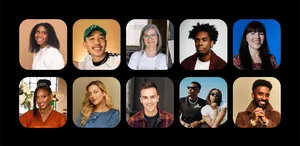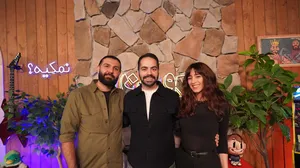How Indigenous creators are sharing their traditions and culture with the world
Today is National Day for Truth and Reconciliation, a day that remembers the survivors of Canada’s residential schools, the children who never returned home, their families and their communities. It is a time to acknowledge the past, reconcile hurt and encourage everyone to learn about the dark history and ongoing impact of residential schools. It’s a day to listen, learn and try to develop a better understanding of the Indigenous experience in Canada.
Indigenous creators have built online communities to share and preserve important aspects of their culture and offer their perspective to a global audience. For this year’s National Day for Truth and Reconciliation, meet two Indigenous Canadian creators who are exploring and sharing their rich and diverse cultures, voices, experiences and stories on their platform.
Breanna Deis
Breanna Deis is an Indigenous YouTube creator and bead artist from the Ulkatcho First Nation living in Vancouver, BC, the unceded land of the Squamish, Stolo, Tsleil-Waututh, and Musqueam Nations.
Like many Indigenous Peoples, Breanna grew up without a close connection to her Indigenous culture because her mother was part of the Sixties Scoop, a group of policies that allowed Canadian Child Welfare authorities to remove or “scoop” up Indigenous children from their families and place them for adoption with white families. More recently, Breanna started beading as a way to reconnect to the traditions she missed out on growing up. When she went online, she couldn’t find many beading tutorials, and didn’t know any elders who could teach her. So, she began teaching herself. As Breanna learned, she realized she could help others too, and started posting her process on YouTube where she quickly gained a growing and passionate audience.
What began as a hobby in early 2020 to discover and connect with her identity, has since become a life-changing passion and fulltime job for Breanna. “My work reflects modern indigeneity and serves as a reminder to the world that Indigenous people are still here, that Indigenous art is thriving, and that it can be found in more places than history museums.”
Online, Breanna uses her channel to help other Indigenous people learn the art of beadwork and reconnect with their culture. Locally, Breanna also teaches beading workshops at the Urban Native Youth Association in Vancouver, British Columbia. However, it’s not lost on her that, as a white-passing Indigenous person, she does not experience the same oppression other Indigenous people face. To support more of her community, she donates a portion of her proceeds to Indigenous and BIPOC charities.
In her own words, Breanna says: “Bringing people joy and showcasing how beautiful Indigenous culture is, and helping pave the way for other Indigenous creators and artists to share their passions and connection to their culture with the world is my ultimate goal.”
Halluci Nation
Music is an artform that transcends barriers like geography, culture and language, and every artist dreams of using their music to tell their own story. The Halluci Nation is an Ottawa-based Indigenous electronic music group duo made up of Tim "2oolman" Hill, a Mohawk of the Six Nations of the Grand River, and Ehren "Bear Witness" Thomas of the Cayuga First Nation. They’ve leveraged their unique music sound to do just that.
Their music combines a variety of influences, from hip-hop to pow-wow drums and vocals and blends them with electronic production to digitize traditional Indigenous music and bring it to the masses. They also feature drum groups, throat singing and spoken word artists as part of their unique style, which attracts listeners from within and outside of Indigenous communities.
From the beginning, their mission was to use their art to share their activism and positive messages of self-identity, representation and acceptance. The group was formed when Bear Witness and former member, Ian Compeau, saw an opportunity to throw parties that represented the Indigenous population of Ottawa. These Electric Pow Wow parties went on to become some of Ottawa’s most popular events and led to the formation of A Tribe Called Red, The Halluci Nation’s former band name.
The late Indigenous activist and poet John Trudell originally conceptualized the term “Halluci Nation,” which describes remembering at your core what it means to be human, and living life in line with Indigenous values. The group collaborated with Trudell prior to his death in 2015 and his voice is prominently featured in two of their songs. The group’s work with Trudell helped them build a roadmap for the future of the band, and what ultimately led to the band’s name change. In their original mission statement for the concept album, We Are the Halluci Nation, the band said that the idea of the Halluci Nation "promotes inclusivity, empathy and acceptance amongst all races and genders in the name of social justice."
Since 2010, the duo have been using YouTube and other channels to release new music, share behind-the-scenes videos and showcase contemporary and multifaceted Indigenous culture. Their genre-blurring style has received international acclaim and brings key political issues affecting Indigenous communities to a global audience.
To learn more about how you can show your support and observe National Day for Truth and Reconciliation, you can visit:




